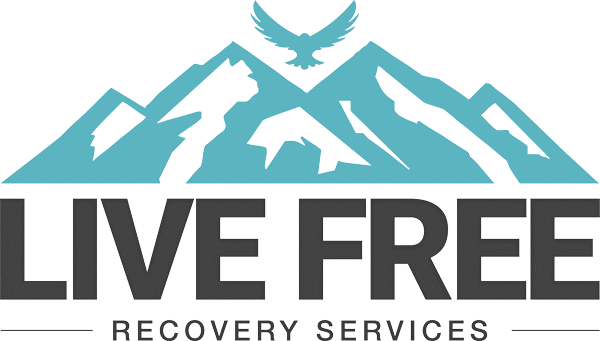In the US, about 1.8 million people aged 12 or older abused inhalants in 2015. In 2021, this number jumped to 2.2 million across the country.
In New Hampshire, inhalants addiction poses a serious threat to the health of the population, especially the youth. Luckily, overcoming it is possible through professional help, but the first step to recovery is to better understand this condition.
In today’s guide, we’ll explore the causes, symptoms, and outcomes of inhalants addiction. We’ll also break down the common inhalants addiction treatment options to get started.
Table of Contents
What Are Inhalants and How Are They Abused?

Inhalants are volatile compounds that generate inhalable vapors. These fumes contain chemicals with mind-altering (psychoactive) effects.
These substances are called inhalants because they’re rarely taken in a form other than inhalation. Since they’re inhaled, susceptible individuals use them to produce a quick rush or high.
Inhalants can be found in various workplace and household products. The ease of accessing these substances and their affordability –not to mention, being legal and simple to hide– are huge factors in why certain people are vulnerable to inhalant abuse and addiction.
There are thousands of products that can be classified as inhalants, which are grouped under 4 main categories as follows:
- Volatile solvents; paint removers, paint thinners, gasoline, lighter fluid, degreasers, rubber cement, nail polish removers, glues, felt tip markers, and correction fluids.
- Gasses; medical anesthetics (nitrous oxide in whipped cream and propellant cans, halothane, and chloroform) and household items (refrigerants, propane tanks, and butane lighters).
- Aerosols; spray deodorants, spray paints, fabric protector spray, vegetable oil spray, and hair spray.
- Nitrites; room deodorizers, liquid aroma, and leather cleaners.
Why Are Inhalants Addictive?
Inhalants can be addictive with repeated use as patients develop the overwhelming urge to continue taking them after prolonged abuse.
This dependence happens due to tolerance, which is what happens when the brain needs a higher dose of the drug to achieve the same “high”. This pushes individuals toward compulsive use, turning into addiction.
What Are the Effects of Inhalant Addiction?
Chemicals from inhalants enter the body through the lungs and quickly reach the brain, producing sensations of euphoria and excitability. Other effects of inhalants include dizziness, low self-control, slow reflexes, lightheadedness, poor coordination, slurred speech, and blacking out.
That said, inhalant abuse is associated with a wide spectrum of side effects, ranging from mild to irreversible to life-threatening.
Short-term Adverse Effects
These include;
- Headaches
- Nausea and vomiting
- Muscle weakness
- Insomnia
- Disorientation
- spasms/convulsions
- Blurred vision
- Suffocation
- Coma
Long-term Adverse Effects
These include;
- Kidney damage
- Liver damage
- Deterioration of brain cells
- Brain damage
- Loss of vision
- Memory loss
- Loss of cognitive abilities
- Loss of coordination
- Hearing loss
- Muscle deterioration
- Limb spasms
- Bone marrow damage
- Respiratory damage
- Heart failure
- Personality changes
- Stunted behavioral development
- Coma
- Death
Overdose
It’s possible for patients struggling with inhalants addiction to overdose, especially with aerosols and solvents where harmful chemicals exist in high concentrations.
Overdosing on inhalants, even if you’ve never taken them before, can cause seizures, coma, and even death due to cardiac arrest, asphyxiation, or suffocation.
What Does Inhalant Addiction Look Like?
Inhalants addiction can be recognized in individuals, but the task may be a bit tricky as their effects have a short duration.
Symptoms of Inhalant Abuse
Common signs of inhalant addiction include:
- Red, puffy eyes
- Unusual odor from the mouth
- Loss of appetite
- Runny nose
- Mouth sores
- Appearing and behaving drunkenly
- Anxiety
Symptoms of Inhalant Withdrawal
Stopping the use of inhalants also comes with a set of withdrawal symptoms that range from mild to severe, such as;
- Agitation and irritability
- Runny nose and/or eyes
- headaches
- Nausea and vomiting
- Hand tremors
- Elevated heart rate
- Excessive sweating
- Insomnia
- Dizziness
- Anxiety
- Cravings
- Depression
- Restlessness
- Psychosis
- Mood swings
- Hazy memory
- Inability to focus
- Anger/emotional outbursts
Withdrawal symptoms typically start within 1 to 2 days from the last use of inhalants. In most cases, inhalant withdrawal lasts around 7 days, but the exact duration can differ from one patient to another.
This depends on several factors, including the type of inhalant abused by the patient, the frequency of abuse, and the period of abuse.
Inhalants Addiction Treatment Options
Now that you’re familiar with the forms, causes, effects, and symptoms of inhalant addiction, let’s take a look at the common treatment options.
Programs
First, here’s a breakdown of rehab programs typically used for inhalants addiction treatment:
Detox
detoxification, or detox, usually involves giving the patient a gradually decreasing dose of the chemical until they’re completely off of it.
However, with inhalants, tapering the drug isn’t the proper procedure. Instead, patients have to stop using the chemical altogether due to its dangerous short and long-term side effects.
To manage the withdrawal symptoms, the patient can be given medications to help alleviate them.
Inpatient Treatment
Inpatient or residential treatment is a program that involves patients staying in hospitals or medical facilities for 3 months or longer.
This type of program provided structured support with 24/7 medical care. The treatment is comprehensive, including detox and behavioral therapy.
PHPs
Short for partial care programs, PHPs split the difference between inpatient/residential and outpatient programs. Patients who enter a PHP attend treatment and therapy sessions during the day, and once the day’s agenda is complete, leave to resume their everyday lives.
Intensive Outpatient Programs and Outpatient Treatment
In IOP and outpatient treatments, patients attend therapy sessions (such as CBT, individual, and group therapy) at the rehab center. Typically, sessions take place a few times during the week.
However, patients live at home and have more flexibility to go about their commitments and normal lives.
What sets IOP apart from outpatient programs is involving a greater number of therapy sessions per week.
Aftercare and Relapse Prevention
After completing a rehab program, recovering patients often require ongoing support to help them stay away from substance abuse. This can be in the form of private therapy, 12-step programs, sober living programs, and alumni groups.
Therapy
In combination with the programs above, various types of therapy are used to address all of the patient’s recovery needs, not only the inhalant abuse.
Cognitive Behavioral Therapy
CBT is an effective type of talk therapy that aims to change patients’ thought processes to help them manage their problems.
CBT does this by working on the connection between thoughts, emotions, and actions. It focuses on harnessing the significant influence of how one thinks on how they feel and what they do.
Therapists in CBT help patients recognize negative thought patterns that contribute to emotional distress and destructive behaviors.
Once identified, they teach patients the necessary skills to bypass and replace them with healthier thoughts.
Dialectical Behavioral Therapy
Based on the principles of CBT, DBT dives deeper into the patients’ psyches and helps them develop better mindfulness to improve their awareness of their feelings and thoughts.
DBT also works on managing intense emotions to fight the urge to self-destruct and take impulsive reactions. It teaches patients how to deal with psychological stress and express themselves more effectively.
DBT aims to enable patients to identify triggers, form coping mechanisms, control urges/impulses, and build healthier communication skills.
Individual Counseling
This type of counseling offers patients struggling with addiction a confidential, safe space to explore the fundamental reasons for their substance abuse disorder.
During one-on-one sessions, the therapist helps patients navigate the triggers of cravings, pinpoint the root causes of the addiction, and develop healthy coping mechanisms to deal with difficult emotions and stress.
All this encourages self-awareness and resilience in patients so they can process difficult sensations and set personalized recovery goals.
Group Therapy
In group therapy, patients attend sessions with other individuals going through similar struggles.
Everyone shares their experiences, thoughts, and emotions, fostering a sense of belonging to a community and building a support system of peers.
This type of therapy helps reduce feelings of isolation, creates a stronger sense of accountability, and allows patients to learn from others’ successful battles against addiction.
Family Therapy
Addiction can significantly strain a patient’s social life, especially their relationships with family members and significant others.
Family therapy aims to rebuild the trust between the affected individuals and repair broken relationships.
Therapists can help facilitate that by tackling communication barriers between participants, educating them on addiction, and teaching them how to establish healthy boundaries.
This approach plays a crucial role in providing patients with a solid support system to help maintain recovery.
Conclusion: Retaking Control
Seeking professional help is the best way to confront and overcome inhalant addiction. The path to recovery may not be easy, but a healthy future is worth it.
If you or your loved one is struggling with inhalant abuse, don’t hesitate to contact our team at Live Free. Located in New Hampshire, we offer effective, evidence-based inhalants addiction treatment methods to ensure safe and successful recovery.
Resources
- https://www.samhsa.gov/data/sites/default/files/report_3095/ShortReport-3095.html
- https://nida.nih.gov/publications/research-reports/inhalants/what-scope-inhalant-abuse
- https://my.clevelandclinic.org/health/diseases/15742-inhalant-abuse
- https://nida.nih.gov/publications/research-reports/inhalants/what-are-inhalants
- https://nida.nih.gov/publications/research-reports/inhalants/how-can-inhalant-abuse-be-recognized
Published on: 2024-04-05
Updated on: 2024-04-15
